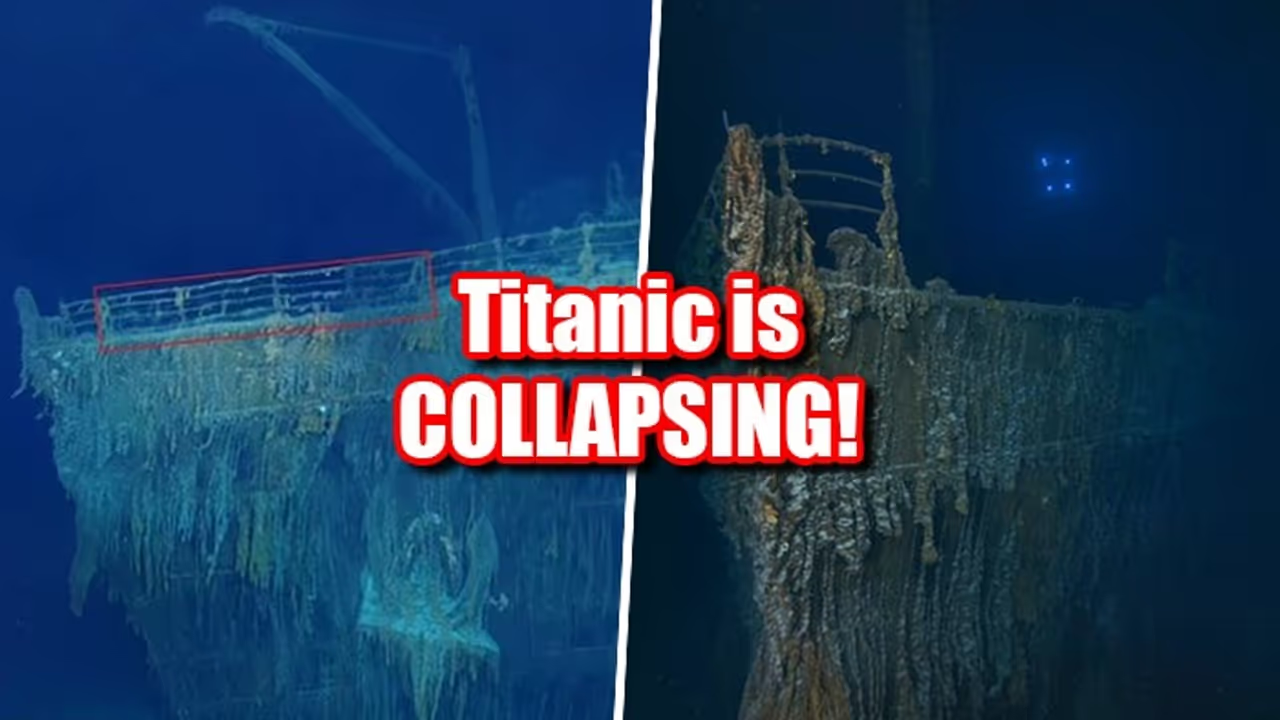The bow of the RMS Titanic, immortalized in the 1997 blockbuster film, has now succumbed to the relentless forces of nature and time.
The bow of the RMS Titanic, immortalized in the 1997 blockbuster film, has now succumbed to the relentless forces of nature and time. Newly captured images from a recent expedition reveal that the iconic structure, once the setting for one of the most famous scenes in movie history, has collapsed onto the seabed.
This summer, robotic submarines deployed by RMS Titanic Inc., the company holding the sole salvage rights to the Titanic wreck, discovered that a 4.5-meter (14.7-foot) section of the ship's bow has crumbled away, marking a significant deterioration in the ship's condition. The discovery has raised alarm among experts, who now warn that the entire wreck could disintegrate sooner than anticipated.
Tomasina Ray, Director of Collections at RMS Titanic Inc., expressed the gravity of the situation, stating, "People ask all the time: 'How long is Titanic going to be there?' We just don't know, but we're watching it in real time." Ray's comments underline the urgency felt by those who have dedicated themselves to studying and preserving the legacy of the Titanic.
The Titanic, once the largest and most luxurious ocean liner in the world, met its tragic end on April 15, 1912, after striking an iceberg in the North Atlantic. The disaster claimed the lives of 1,500 passengers and crew, and the ship's remains settled on the ocean floor at a depth of 3,800 meters (12,500 feet) off the coast of Newfoundland, Canada. The wreck remained undiscovered until 1985, when a team of explorers captured the first images of the ship's remains. Remarkably, the bow's railing, later immortalized by the film Titanic, was still intact at that time.
However, the latest expedition, conducted between July and August of this year, has revealed a stark change. Two remote-operated vehicles (ROVs) launched by RMS Titanic Inc. discovered that a significant portion of the bow railing is now missing. Subsequent 3D scans of the area confirmed that the section had collapsed as a single piece onto the seafloor.
"The bow of Titanic is just iconic - you have all these moments in pop culture - and that's what you think of when you think of the shipwreck. And it doesn't look like that anymore," said Ray, reflecting on the profound impact this deterioration will have on the collective memory of the Titanic.
The collapse is believed to have occurred within the last two years, as images and 3D scans taken in 2022 by deep-sea mapping company Magellan and documentary makers Atlantic Productions showed the railing still in place. The metal structure of the ship has been under constant attack by microorganisms, which create large rust stalactites, known as rusticles, that have been steadily eating away at the Titanic's once-strong hull.
Since the wreck's discovery, successive expeditions have documented the gradual decay of the Titanic. By 2022, the bow had already begun to buckle under the pressure of erosion, and now, with the collapse of this significant portion, experts acknowledge that it is only a matter of time before more of the ship disintegrates.
"It's just another reminder of the deterioration that's happening every day," Ray added.
As the Titanic continues to deteriorate, efforts are being made to preserve and salvage as much of the ship as possible before it is lost to the ocean. RMS Titanic Inc. has noted that new areas of deterioration could provide unprecedented access to the ship's interior, offering new opportunities for exploration and discovery.
During their latest expedition, the two ROVs captured over two million still photographs and 24 hours of high-definition video footage. This vast collection of data is currently under review, with the goal of creating a detailed 3D model of the Titanic, allowing future generations to experience the ship in virtual form, even as its physical structure fades away.
One of the most significant finds from this summer's expedition was the rediscovery of a long-lost artifact: the Diana of Versailles, a bronze statue that once adorned the first-class lounge of the Titanic. The statue was initially seen in the debris field during the 1985 expedition, but due to secrecy surrounding the discovery, its exact location was never recorded. Now, nearly four decades later, the 60-centimeter-tall figure has been found again.
"It was like finding a needle in a haystack, and to rediscover this year was momentous," said James Penca, a Titanic researcher and presenter of the Witness Titanic podcast. He highlighted the significance of the statue, noting that it was the centerpiece of the Titanic's first-class lounge, one of the most opulent rooms on the ship.
Since 1994, RMS Titanic Inc. has held the exclusive rights to salvage artifacts from the Titanic. The company has recovered thousands of items from the wreckage and now plans to retrieve the Diana of Versailles from the seabed and display it to the public.
"To bring Diana back so people can see her with their own eyes - the value in that, to spark a love of history, of diving, of conservation, of shipwrecks, of sculpture, I could never leave that on the ocean floor," said Ray, emphasizing the cultural and historical importance of such artifacts.
As the Titanic's remains continue to succumb to the passage of time, the efforts of explorers and historians to preserve its legacy take on a new sense of urgency. The collapse of the bow railing is a stark reminder of the impermanence of even the most iconic structures, but through these ongoing expeditions, the story of the Titanic will continue to captivate and inspire generations to come.
